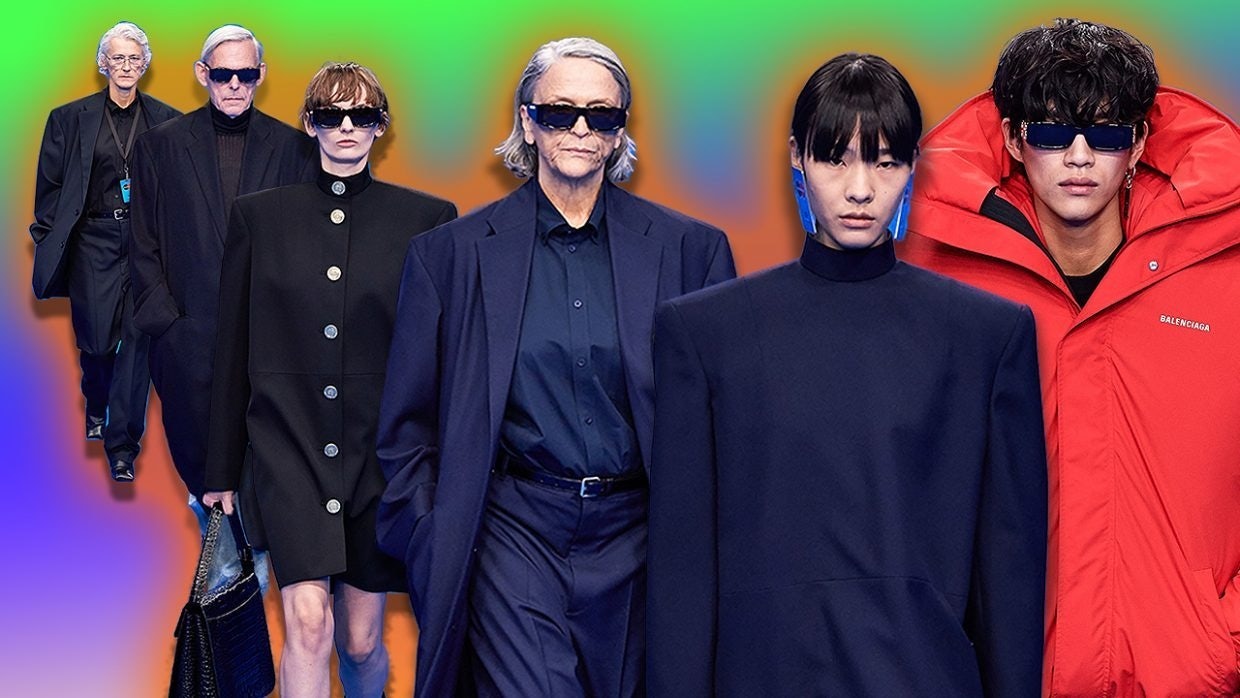Amid the expanding COVID-19 crisis, the luxury world is wondering again if runway shows have become outdated. For years, industry experts have been announcing the end of fashion shows, but until the COVID-19 outbreak, this idea seemed too radical for fashion loving-crowds to accept.
Despite accusations of them being pricey environmental challenges, fashion shows continued to pop up in the most extravagant settings during the 2010s. Chanel, for example, presented an over-the-top underwater theme (S/S2012), a giant bronze lion statue (F/W2011), a decadent theatre (F/W 2013), and a brasserie (A/W 2015). Meanwhile, Louis Vuitton (S/S 2014) mounted a gothic carousel and Christian Dior (F/W 2010) presented an excess of exotic blooms. But, in a new “age of scarcity," as the world combats soaring food prices and income inequality, runway shows seem like a pointless exercise in vanity.
Now, the COVID-19 outbreak that has scared away fashion-loving crowds and pushed luxury brands into crisis mode is only accelerating the inevitable. In an age of livestreaming and “cloud” fashion weeks, heritage houses are being forced to rethink the entire system lest they risk becoming uncompetitive and superfluous.
Trailblazers like François-Henri Pinault and Anna Wintour are already questioning the future of these runway shows, with Wintour saying, “At a time of crisis, we have to think about a radical reset.”
That “radical reset” shouldn’t come as the cancelation or delay of one particular fashion show but rather the complete rejection of current fashion-show standards. Let’s face it: runway shows are a sign of elitism and privilege, and they punish emerging designers and up-and-coming fashion brands that don’t have the liquidity and revenue to take part in these prestigious events.
Moreover, luxury labels created runway shows as a way to expose the newest collections to their clientele. But today, customers live in far-reaching places around the world, so the effectiveness of this plan is now questionable.
After taking the shortcomings of this system and the move towards a “see now, buy now” business model into account, some are wondering if runway shows are still a viable option in this new decade. International buyers, clients, and investors could cut their travel expenses and save airline miles by watching the shows live-streamed on their computers or by flipping through retail product catalogs. There's also the end consumer who, in this new business model, is empowered to assess products and can offer honest feedback.
Thanks to a new digital landscape, our social and physical realms have changed, so the fashion world can no longer push the same traditional fashion calendar onto us. A more inclusive and participatory approach involves touching and testing products, and that’s what Alibaba’s “new retailtainment model” offers.
While China has disintegrated the frontiers between technology, media, and culture, and has put creatives, suppliers, and buyers on the same team, the Western world is having a hard time catching up. Unfortunately, this is creating a dangerous situation as Western players alienate entire generations of consumers who feel left behind or ignored.
The digital-first generation needs to feel, touch, and experience a brand before they buy into it, and the current setting is preventing these interactions. In fact, under the existing regime, only a selected group (buyers, editors) can offer design feedback, communicate with creative teams, and maintain a relationship with the brand. This is unacceptable, and with the proliferation of social networks and mobile devices, brands now have a real opportunity to directly engage with consumers.
In China, Alibaba makes a well-informed, connected, and demanding customer into the brand’s architect, judge, and biggest fan. For instance, Shanghai Fashion Week had to be canceled because of the COVID-19 outbreak, but the institution partnered with Alibaba to livestream the collections directly to consumers. Alibaba also included its “see now, buy now” feature, which allows for instant purchases.
Speaking to WWD.com, Xiaolei Lv, Vice Secretary of Shanghai Fashion Week, said that “Tmall promises to direct millions of traffics to our designers. This means brands will be able to generate more sales, and many of them can be saved from bankruptcy amid this difficult time.”
Since live commerce generates high revenue and is more engaging and entertaining, it does not seem too far of a stretch to conclude that this model will eventually replace traditional runway shows. In fact, Deloitte estimates that livestreaming in China reached 456 million viewers and generated 4.4 billion in sales in 2018.
Adding fuel to the fire, there’s also the well-documented growing disillusionment of the professional fashion community about runway shows and fashion weeks. Now those feelings are materializing, as the “long-suffering New York Fashion Week” has just received a new blow from Tom Ford, who scheduled his Autumn/Winter 2020 show in Los Angeles. Meanwhile, Paris is in anguish over insurgencies and the Yellow Vest protests, and London is deeply entangled in Brexit.
New fashion capitals are emerging in the East (Moscow, Kiev, Shanghai) and the South (São Paulo, Bogota, Mexico City) because wealth and power has migrated to these destinations. And thanks to the growing angst over “fashion month,” we foresee shoppable experiences slowly replacing today’s high-cost fashion jamborees.

